Trends Presentation
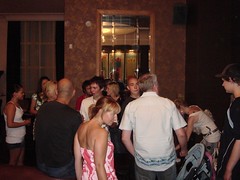 I made my trends presentation in Leeds yesterday. It seemed to go down well, everyone said they enjoyed it and the clients, who shall remain nameless, seemed to get lots out of it - probably due to the immersion weekend that Dubit put them through rather than my presentation.
I made my trends presentation in Leeds yesterday. It seemed to go down well, everyone said they enjoyed it and the clients, who shall remain nameless, seemed to get lots out of it - probably due to the immersion weekend that Dubit put them through rather than my presentation. It was a really enjoyable experience from my perspective, with some really great ideas and some interesting questions posed by the audience.
I'll try and make the content available - maybe in the John Grant style on flickr.
Thanks to all at Dubit - a really switched on research agency. Next time you guys are in London it'd be cool to hook up.
Update: The pdf can be downloaded from here.
Tags: Trends
posted by Henry Lambert at Sunday, July 30, 2006
0 comments


Bloody trains
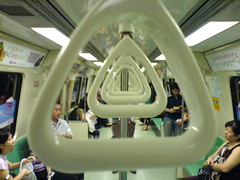 I travelled up to Leeds on the train today. It's amazing how much you don't know about your own country. Despite having lived in the North for 30% of my life I'd never actually been to Doncaster. Even now I've only travelled through it. We also stopped at a station called Newark. Again I'd never realised that there was a Newark in England.
I travelled up to Leeds on the train today. It's amazing how much you don't know about your own country. Despite having lived in the North for 30% of my life I'd never actually been to Doncaster. Even now I've only travelled through it. We also stopped at a station called Newark. Again I'd never realised that there was a Newark in England.The journey was ok but as suspected GNER didn't live up to their brand promise. Because of a last minute change to the time of my presentation I travelled on an early train and was surprised when the cheapest ticket I could buy cost me over £70. The wifi that GNER boasts about in its ads exists, but do any of the GNER staff know the password? Nope. As I left the train I spotted a how to connect brochure - having charge £72 for a ticket it's an additional £2.95 for 30mins of wifi access anyway!
I remember pitching for the GNER account a year or so ago and we decided to take a trip on one of their trains. First of all it was a pretty ugly train ex British Rail with just GNER livery added, then mid way into the journey the train decided that after 50 years of service (or whatever it was) this was going to be its last journey and when going up a gentle incline behaved like a geriatric asthmatic and came coughing to a halt. After 10 or so minutes of trying to resurrect the tired beast a tow train was called to shunt us to the nearest station. This took an age to arrive and when it did finally get there it took us to a local station where we waited for another train which was now ridiculously overcrowded.
It's incredible how in the 21st century train companies can act in a completely outdated manner. But I guess with a monopoly on most routes its pretty easy. Maybe I'll fly next time.
posted by Henry Lambert at Saturday, July 29, 2006
0 comments


Afternoon Tea
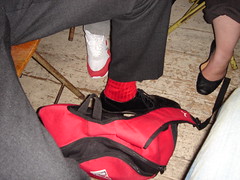 I went to my second Russell Davies coffee morning style session today.
I went to my second Russell Davies coffee morning style session today. It was another great opportunity to meet interesting people. We talked Nike, comics, the perils of buying your own flights, Howies and the falibility of servers.
It was good to meet Rob, Richard, Enoch, Seb and Karen.
I also had an interesting chat with Paul about 'insights', propositions and creative briefs.
Image courtesy of Paul Colman
posted by Henry Lambert at Saturday, July 29, 2006
0 comments


Ed Cotton of Influx & BSSP
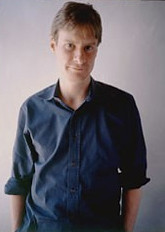 I was lucky enought to meet Ed Cotton, Planning Director of BSSP and Influx fame. I was late for our meeting, sorry Ed.
I was lucky enought to meet Ed Cotton, Planning Director of BSSP and Influx fame. I was late for our meeting, sorry Ed. We talked about the quality of UK and US advertising, blog tracking, the ubiquitous Piers Fawkes, junior planners and blogging, apathy to new media from agencies, Zidane's headbutt, the decline of the TV spot and the rise of the 'idea'. I wish I was as prepared as Paul and had an mp3 recorder to hand.
We also touched on creative spaces and Ed mentioned that BSSP's planners, inspired by IDEO, have a wall which they will curate and put up interesting images, articles etc so that creatives can 'find' inpiration rather than being spoon fed it by the planning team.
Another interesting conversation centered on the self-fulfilling prophecies of some trend spotting agencies. For example, those with the ear of major content producing corporations such as the BBC can be influenced by a trend agencies whim and base their content around an artificial trend, this in turn influences other content providers and opinion leaders in a traditional diffusion fashion and an artificial trend is fully born without any real grass roots.
It was great to have a chat with Ed, he's a lovely bloke and was also kind enough to pay for my dinner. Thanks Ed!
posted by Henry Lambert at Thursday, July 27, 2006
0 comments


ftblltshrts
posted by Henry Lambert at Saturday, July 22, 2006
0 comments


Pecha Kucha Night
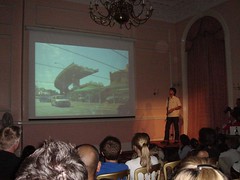 We had a great time at the Japenese Embassy last night watching our very first Pecha Kucha. The premise is this:
We had a great time at the Japenese Embassy last night watching our very first Pecha Kucha. The premise is this: Participants get to show 20 slides for 20 seconds each, meaning the audience experiences an exhilarating range of speakers and images over the course of the evening
It's a really great idea and some of the speakers were amazing and very interesting. The limited amount of time they get on stage means that time flies by.
Favourite speakers were:
Keigo Harada, product designer who's ideas included a breathing bed - he tried to find what people didn't like in their bathrooms - removed the clutter and ended up with an umbrella like shower (the water jets create an umbrella shape - coming from the ground up and then dissapating)
Yoshihiro Katsumata, Yamaha, musical instrument designer who talked about breaking things down to their key component - so a ladder became one step, a tambourine had just one bell etc
Luke Pearson, of PearsonLloyd, furniture designers
I highly recommend the Pecha Kucha nights. They are energetic and great fun. The range of speakers is great and the swiftness of the presentations means that you're always interested and it never gets boring. I didn't switch off once in over 90mins of presentation, surely a first! I hope this crosses over into the business world!
Tags: Ideas, pechakucha
posted by Henry Lambert at Thursday, July 20, 2006
0 comments


Sony DSC-T5 - a quick review
 I placed this review on Amazon but thought I'd put it here for posterity:
I placed this review on Amazon but thought I'd put it here for posterity:I've been a big fan of Sony digital cameras since I bought my first DSC P72. However, the P72 has, after three years, run out of steam. So prior to my recent holiday in Italy I took the plunge and invested in a DSC-T5 because it had good reviews and it was slim enough for me to carry around everyday.
The experience of actually using the camera is great. Like the P72 it is incredibly simple to use, feels well built with a straight forward physical and electronic interface. The screen is also a great asset being a very generous size. It was on the screen that I frst noticed that photos didn't appear quite as sharp as I'd expected.
Once I'd returned home and downloaded my pictures to my Mac (a very easy and straight forward process) I was disappointed to find that the sharpness of the images was no where near as good as my 3 megapixel P72. It's all very well having an extra 2 megapixels to zoom into but if the image is blurred, as they invaribly are with this camera, it rather defeats the point of the extra pixels. Now I accept that I may not be a great photographer, but my shots looked respectable with the P72. Subsequent tests with the T5 using different settings have failed to produce satisfactory results.
I find the lens of this camera to be of similar quality to the camera in my girlfriends Sony Ericson K750 mobile phone. Not what I would expect from Sony. I can't really recommend this camera. It seems that you sacrifice a lot of quality when you drop down to this camera size.
posted by Henry Lambert at Thursday, July 20, 2006
0 comments


Pecha Kucha Night
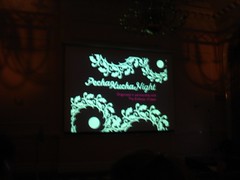 I've just got back from this event at the Japanese embassy. I'll post more on it later. Suffice to say it was excellent and Pecha Kucha is a great concept.
I've just got back from this event at the Japanese embassy. I'll post more on it later. Suffice to say it was excellent and Pecha Kucha is a great concept. I just want to note down the following:
1. Presenting is theatre - you need to physically present in person or it's just as if you're watching TV
2. It's a great idea to have slides that last 20 secs each and continue in the background while you talk. Don't start every new slide with 'This is...' of 'This shows...' slides should add to your presentation not be the focus
3. It really makes a difference if you hand an item round for the audience to feel. This didn't happen tonight but it made me think that having something tangible is well worth doing.
4. There's a man working for Panasonic called Keigo Harada and he's a genius. He's invented a shower that works like a water umbrella in an attempt to simplify the bath room and he's invented a bed that breathes - it has a gentle up and down motion. In trials 10 out of 10 babies placed on the bed were asleep within 10 mins!
posted by Henry Lambert at Wednesday, July 19, 2006
0 comments


Tango Ad
posted by Henry Lambert at Tuesday, July 18, 2006
0 comments


Everything Bad is Good for You
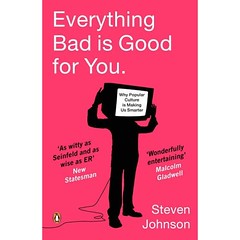 We recently pitched for some Playstation work and as part of the background research for our presentation I remembered reading Malcolm Gladwell's review of this book in the New Yorker magazine. The article itself gives a great over view of the book and one I could never hope to match. However, I thought the book would make great holiday reading and so on my recent holiday in Italy devoted a day to it.
We recently pitched for some Playstation work and as part of the background research for our presentation I remembered reading Malcolm Gladwell's review of this book in the New Yorker magazine. The article itself gives a great over view of the book and one I could never hope to match. However, I thought the book would make great holiday reading and so on my recent holiday in Italy devoted a day to it.Steven Johnson is a good writer, he's not in the same league as Gladwell but nonetheless is easy and engaging to read. He puts the concept behind the book into an interesting context, one that many boys will have experienced.
As the name suggests the book argues that popular culture that has consistently been seen as unrewarding trash and not in the league of the golden ages of culture is actually helping us to become more intelligent.
For example, while an episode of Dragnet would have a completely linear story line, its modern day equivilent, say The Sopranos, would have over 10 woven into it. A much more complex mental proposition. In addition, we would be expected to spot cultural refrences, in jokes from previous series and episodes, and also understand that characters might be talking about future events or events that we as an audience may not have seen.
Johnson argues that not only have critically acclaimed TV programmes become more complex and therefore more testing for our brains, but so have so called junk TV shows. He cites reality shows such as Big Brother or Survivor that display complex social networks and show us how to interperate peoples actions.
Johnson takes his argument into video games, often seen as one of societies pariahs. He argues that the complex world of modern video games teaches us valuable lessons in the real world. Johnson sites the Sims and Sim City as perfect examples of engaging youngsters in real world issues.
Everything Bad is Good For You is a very interesting and well written book. It's central theory appears sound and argues that whilst new media is good, it is not a complete replacement for reading books, going to the theatre or other cultural experiences. Whilst we didn't win the pitch, for anyone interested in marketing TV shows or video games this book is a must read. For anyone else, it's an interesting and witty read that will make for some interesting discussions.
Tags: Books
posted by Henry Lambert at Monday, July 17, 2006
0 comments


Grrrrreat Frosties Firestarter Mash-up
posted by Henry Lambert at Thursday, July 13, 2006
0 comments


Planners vs Creatives
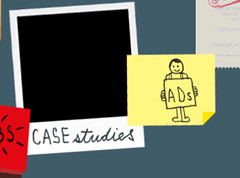 Great post from Northern Planner. Apologies for reproducing in full but I thought it was worth it.
Great post from Northern Planner. Apologies for reproducing in full but I thought it was worth it. 1. Don't forget, planners are not essential. Creatives and account people did fine before planners came along. Planners need to persuade people to want them there. For creatives, being useful means two things: i) Getting their work through research and clients ii) Useful stuff, inspiration and guidance.
2. Getting work through research means using groups (if you have to) to find how to improve the work, not kill it. Getting work through clients means working closely with suits and constantly contributing stuff they won't have considered themselves. It also means being good at suggesting instead of telling.
3. To be able to be useful in the creative process, two things matter. Firstly, how you behave and secondly, the quality of the stuff you give them.
4. When it comes to you, it all comes down to being interesting and helpful. You need to be the person they want in the room. This means working with them instead of dictating, it also means people believing that you're a font of all knowledge. So collect things, articles, pictures, films thoughts,whatever is interesting. If people think you have lots of useful stuff, they'll come to you for it. But be generous, don't try and take credit for their ideas or they'll never come to you again.
5. The creative briefing is important, but all the stuff that goes on before the first review are even more so. Keep on informally dropping in for a chat, giving them stuff they may find useful. Do this before the breifing too. If you want to be part of the creative process, it's only right that they should be part of the strategy.
5. Be quick and do the work. If they ask for something, get it quick while the idea is fresh in their minds. They'll appreciate that you've helped.
6. Creatives tend to prefer analogy and visual stimulus NOT LOTS OF WORDS. Give them loads of stuff - it's the density and relevance of the stimulus that counts more then the quality, they'll know how best to utilise it.
7. It's hard to go to suits for some objective thoughts on where the work is going - they've always got the client hat on. Planners have the opportunity to act as a non-threatening sounding board. There's no need to criticise work either. If you talk about the good work, they'll get the message about the other stuff. Ditto about disussing the good points about individual executions.
8. One of the hardest things to get accross in a briefing is a tone of voice. But just like body language, it's at least as important as what you'ren actually saying. Work hard at showing them the tone instead of telling - pictures, video, real people, anything.
9. There is some disgreement about this, but I've found that creative starters wind them up, while fresh useful insights help.
10. It's not knew, but never forget that creatives remember the briefing, never the brief. Make your brief a pleasure to read as a matter of course, or consider something that is far more than words. Get a bit of theatre into the briefing, get them inspired. They'll have lots of briefs on, how can you make them want to do their best work on yours?
11. (bonus just added). Never underestimate how much they want feedback. If the work has bombed in groups, tell the truth. If the client hates it, tell the truth. You always get found out and you'll have lost them forever.
Tags: planning
posted by Henry Lambert at Wednesday, July 12, 2006
0 comments


PSFK Fashion - American Apparel Interview
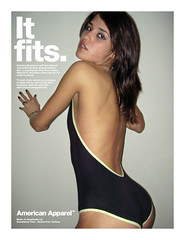 Everyone wants a piece of the worlds hottest label at the moment, American Apparel. Here at PSFK we were lucky enough to talk to Alex Spunt, one of AAs advertising team. Alex is responsible for some ofthe iconic AA ads that have come out over the last couple of years. She gave PSFK the exclusive lowdown on AA's latest ideas which include an online radio station and AAs venture into trousers, a first for the Los Angeles based company.
Everyone wants a piece of the worlds hottest label at the moment, American Apparel. Here at PSFK we were lucky enough to talk to Alex Spunt, one of AAs advertising team. Alex is responsible for some ofthe iconic AA ads that have come out over the last couple of years. She gave PSFK the exclusive lowdown on AA's latest ideas which include an online radio station and AAs venture into trousers, a first for the Los Angeles based company.Interview here.
Tags: Fashion
posted by Henry Lambert at Wednesday, July 12, 2006
0 comments


Expressing a brand in hats.
 Every week Britain's favourite smoothie maker and festival organiser, Innocent, sends out a newsletter. And this Tuesday I received my weekly edition. As usual it was full of offbeat and amusing stories but it wasn't until I reached the very end, and the competition that I was completely awoken from my foggy, late afternoon stupor:
Every week Britain's favourite smoothie maker and festival organiser, Innocent, sends out a newsletter. And this Tuesday I received my weekly edition. As usual it was full of offbeat and amusing stories but it wasn't until I reached the very end, and the competition that I was completely awoken from my foggy, late afternoon stupor:"This week's challenge - as Royal Ascot begins this week, we've decided to stick to tradition and find the best hat. It can be
as outrageous as you like, but the more innocent it is, the better."
Brilliant. Innocent have given their customers control of their brand in a whole new way. On the surface, Innocent Drinks are cute smoothie bottles with fun illustrations but their brand is so much more and so much cleverer than a 'look and feel' or a 'brand onion/pyramid'. They are defined by the people that buy their product, read their newletter and contibute.
This relates to what John Grant and Russell Davies have been saying on their blogs. Lots and lots of different ideas and thoughts that aren't owned by anyone but that contribute to an understanding of what an organisation stands for.
It's the idea that rather than being forced fed messages and beliefs the consumer or user creates their own
It’s the idea that brands are defined by their users not by their owners
It's the idea that if you are telling someone what to do they'll ignore you
It's the idea that if you let them have a response without force feeding them the message
Yes you need somewhere to start from, so it's not say that branding is dead. It's just that once you have loyal customers who hopefully like you, it's time for them to direct where you should go.
posted by Henry Lambert at Tuesday, July 11, 2006
0 comments


The Press Photographer’s Year
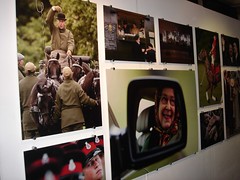 With all the new openings in London you often overlook the more established institutions and the National Theatre on the South Bank is one. A controversial building the NT is continually reinventing itself and hosts chill out nights on Saturdays. Today we visited the Press Photographer's Year which showcased the very best of this year's photos. There are some stunning photos and we had a great time. It's just a shame the exhibition finishes today.
With all the new openings in London you often overlook the more established institutions and the National Theatre on the South Bank is one. A controversial building the NT is continually reinventing itself and hosts chill out nights on Saturdays. Today we visited the Press Photographer's Year which showcased the very best of this year's photos. There are some stunning photos and we had a great time. It's just a shame the exhibition finishes today. Tags: photos
posted by Henry Lambert at Saturday, July 08, 2006
0 comments


bloggers annonymous
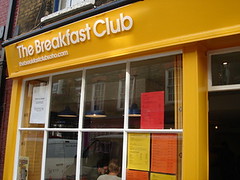 I had the opportunity to meet some very interesting people today and talk nonsense. So thanks to Russell, who hosted, Paul Colman, Lebowski, Paul from Starcom and Jefre . It was a pleasure to meet you all.
I had the opportunity to meet some very interesting people today and talk nonsense. So thanks to Russell, who hosted, Paul Colman, Lebowski, Paul from Starcom and Jefre . It was a pleasure to meet you all.Tags: planning, blogging

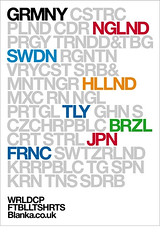 Cool ad for WRLDCP FTBLLTSHRTS. Via
Cool ad for WRLDCP FTBLLTSHRTS. Via